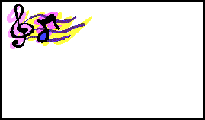II, III and VI Major Chords
May 29th, 2008 by admin
In “The 3 Basic Chords” post, we learned the following 3 chords:
Chord I – i.e., the I major chord
Chord IV – i.e., the IV major chord
Chord V – i.e., the V major chord
Then, in “The 3 Minor Chords”, we learned the following 3 chords:
Chord IIm – i.e., the II minor chord
Chord IIIm – i.e., the III minor chord
Chord VIm – i.e., the VI minor chord
Here, we are going to learn the corresponding major of the above 3 chords. These are:
Chord II – i.e., the II major chord
Chord III – i.e., the III major chord
Chord VI – i.e. the VI major chord
Unlike their minor counterparts that can be improvised using the 3 basic chords, I don’t know of anyway one can improvise II, III and VI major chords, but to learn it by hard. Too bad. ![]()
However, they don’t appear in many songs. And even when they appear in a song, they do so in relatively small part of it.
In the key of C, the II, III and VI major chords are D major, E major and A major chords respectively. This is how you play them:
D major comprises the following 3 notes:
D – i.e,. the “doe” note of the D major scale,
F# – i.e., the “me” note of the D major scale, and
A – i.e, the “so” note of the D major scale.
Figure 1: D Major
Likewise, E major comprises the following 3 notes:
E – i.e., the “doe” note of the E major scale,
G# – i.e., the “me” note of the E major scale, and
B – i.e., the “so” note of the E major scale.
Figure 2: E Major
Similarly, without elaborating, A major comprises A, C# and E notes (i.e., the “doe”, “me”, and “so” notes of A major scale).
Figure 3: A Major
If you were playing in the key of G, then the II, III and VI major chords would be: A, B and E major respectively.





[...] let’s go back to the II, III and VI major chords (my last post). What I want to tell you is: these 3 chords are usually played with their middle [...]
[...] have said earlier that when II, III and V major chords appear in a song, they often do so with their ‘M basses’. For this song, D/F# is the VI major [...]
[...] The following are often associated with one another in the same way (You will see from here the reason to be familiar with II, III, and VI major chords): [...]
[...] (part 2)’ and ‘Improvising Sus4’ if necessary. Now, Sus4 is often applied to the II, III and VI major chords, particularly in the ‘Chord Association’ context. Let’s use the following notation for the [...]
Hi! I think this would be useful. ^_^
You can count piano keys to know all the major chords (include the black keys on the counting). It’s just 4keys-3keys. For example, for C chord, from C, count 4 keys to the right, and you get E; then 3 keys to the right again, you get G. Same goes for every major chord.
For minor chords, count 3keys-4keys.
Hope this helps!
And I learned a lot from your cheats here, especially the sus ones. Thank you so much for putting these up! :))
To all guests of this site: These are really the simplest ways to learn piano. Learned most of these the hard way. Makes me wanna wish that I should’ve found the shortcuts first before learning the notes. ^^
Thank you, Cherry, for your contribution to the post here! And thank you so much for your encouraging comment and feedback! They made my day!
And thank you so much for your encouraging comment and feedback! They made my day! 